I suspect most modern gardeners might be asking what a knot garden is. It’s not something you see very often unless you are visiting old gardens in England.
A knot garden is a type of garden design that features intricate patterns or designs created using various plants, typically herbs or other low growing plants. These gardens originated in England and were popular during the medieval and Elizabethan era. The plants are arranged in a way that resembles interwoven knots or geometric shapes, giving the garden a formal and structured appearance.
The term “knot garden” refers to the intricate knots and patterns created by the plants in the design.

A Knot Garden for Modern Homeowners?
Knot gardens have a problem, though. In your average American garden, they always seem to me to be a bit of a design trick. In their most traditional style of implementation, they come across as a little pretentious (IMO) and slightly old-fashioned. Unless you have a house that looks like an English Manor with a gardening staff to accompany it, they are probably too high maintenance for the average homeowner.
So how to you make a knot garden that works for your suburban landscape? If you are lover of this formal garden style and want to take inspiration from classic english gardens, but make it work in Southern California, Gary Indiana, Chattanooga TN, or even the trendy Hudson valley of NY – how do you modify it for modern life?
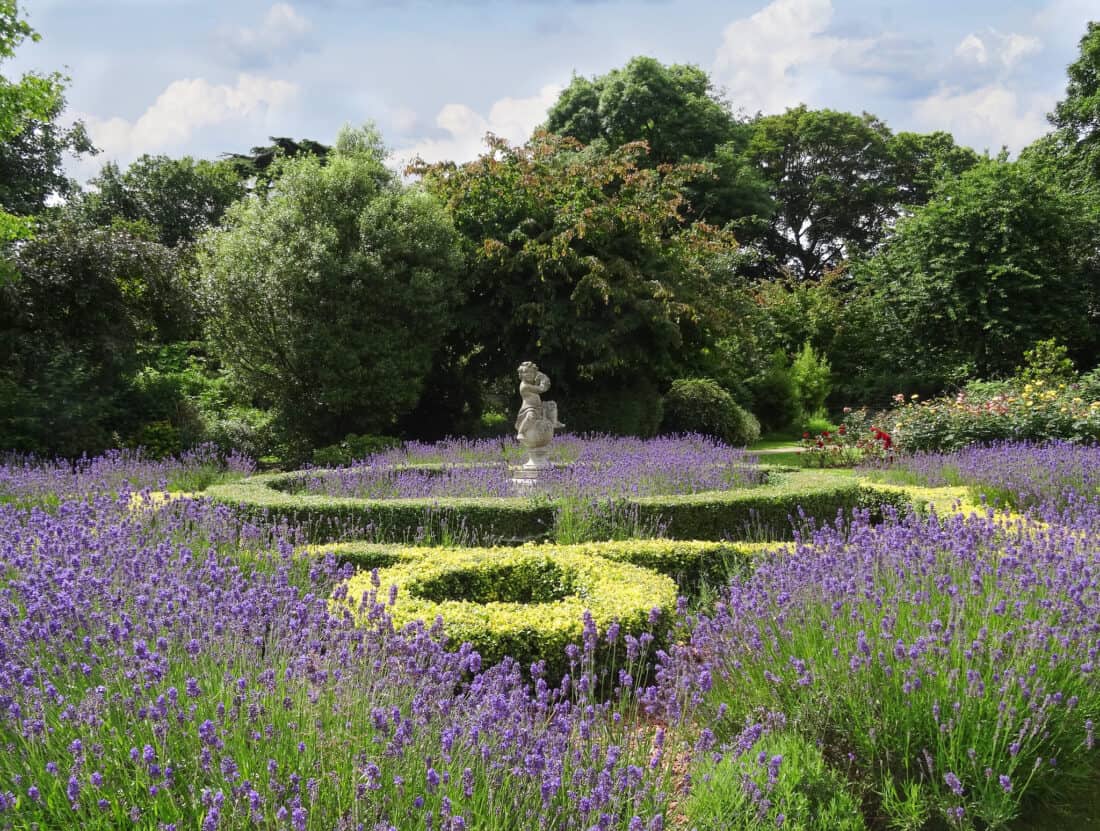
Modernizing the Knot Garden – A Fresh Approach to Timeless Elegance
Parterres and knot gardens, with their meticulously designed patterns of herbs, shrubs, and flowers, have a rich history steeped in horticultural and aesthetic traditions.
They are characterized by their intricate interweaving of low-growing plants, forming geometric patterns that have roots dating back to medieval times. The term “knot” likely originates from the Old English word “cnotta,” meaning a small, ornamental garden.
These gardens were more than just visually pleasing. They also served practical purposes, such as organizing medicinal plants for easy access, preventing confusion, and promoting their cultivation.
Parterre gardens are similar to knot gardens – but different – they originated in Renaissance France and featured more elaborate, often symmetrical, patterns of plants and gravel paths. They were designed to be grandiose and formal, often adorning the grounds of palaces and grand estates.
Both knot and parterre gardens were a testament to the popularity of intricate knot motifs during medieval and Elizabethan times, providing an artistic and functional display of horticultural creativity.
Today, reviving these historic styles can make less showy plants captivating, adding a touch of timeless elegance to modern landscapes.
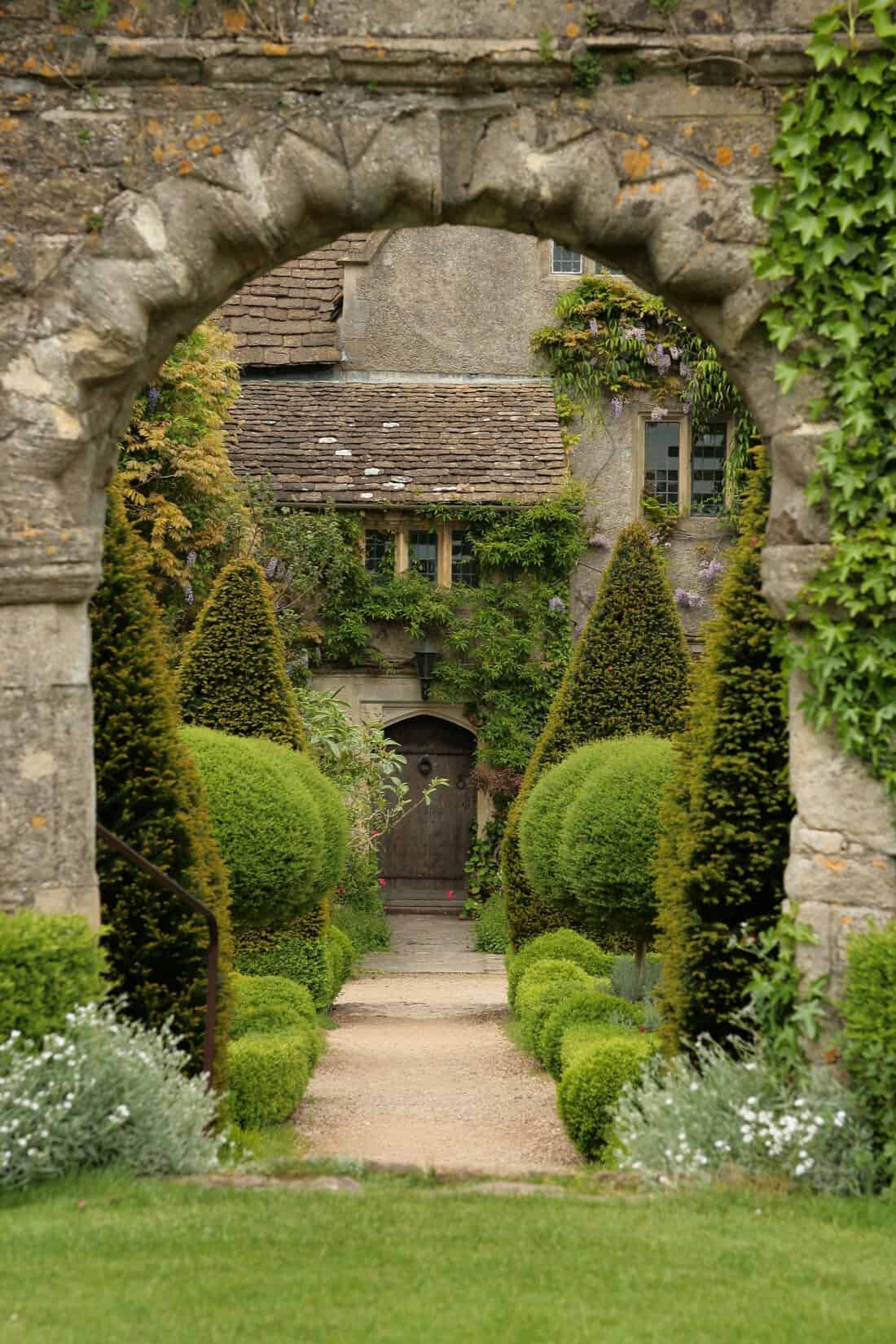
How to Modernize the Knot and Parterre Garden Styles
A modern knot garden in English is a contemporary twist on the traditional design. It combines geometric patterns, vibrant colors, and a variety of plants to create a visually stunning and low-maintenance garden. Bringing it out of landscape where it was a created is trickier. But here are some guidlines:
Keep it on the Level and Define the edges
Parterre and Knot gardens don’t work well on untamed slopes or even on terrain that isn’t perfectly flat. If you have a strong slope in your garden – you could terracing to create a series of wide flat steps.
A parterre is a good option for a terraced garden because the style requres perfectly level surfaces. Often the levels in a terraced garden are looking for a distinctive purpose. Each step of a terraced landscape can be developed differently giving an opportunity to try out different styles from one level to another. Additionally, a terraced garden likely has places that that don’t need to be (or functionally, can’t be) anything more than decorative.
Mind the Boundaries
When looking for a place to site a knot garden or a parterre, look for something where the edges can be defined. A side yard is often a good choice. This is because there is typically a definitive edge or boundary of the house, a property line and a front and back garden that are easily delineated. These four “walls” give a natural definition to the space.
Your space does not however need to rectilinear. While nearly all knot and parterre gardens are based on designs that can fit inside a square or a rectangle – remember, you can always place a rectangle inside a different shape. Then fill in the awkward edges with plants that will obscure any crooked angles or lines that are uneven.
Choose Non-Traditional Parterre Plants for your modern knot garden
The typical parterre relies on evergreen plants such as boxwood, myrtle, euonymus, yew, pittosporum, etc. to create the basic structure. The spaces created within the structure are filled with colorful blooms, or plants with varied texture or color. The over all effect is a rigid and formal scheme that highlights any anomaly and forces higher maintenance to keep it looking sharp.
If you opt instead for looser plants that defy the rigidity – even at their very best, you will create something that is looser and can still look interesting – even if it isn’t perfect.
Examples of Modern Knot Gardens
By taking inspiration from the classic Knot garden – this modern looser version of a parterre is much more achievable and appropriate.
This one was created by Eckersly Garden Architecture in Australia. It uses sedum and a variety of drought tolerant grasses to create simple patterns.
The Filoli Knot Garden, while being precisely the kind of place you might expect an old-fashioned, clipped-tight Knot garden, takes the idea in a freer direction by using plants that don’t need the clipping. It is their more casual and looser form that gives this knot movement. The lavender and berberis appear in glorious drifts that also happen to be pleasingly symmetrical
Ideas for knot garden plants to use in modern parterre:
Here are some other creative plants to use in modern parterres and knot gardens – These knot garden plants are chosen for their ability to keep good structure both on their own and through pruning.
- Lavandula angustifolia ‘Hidcote’ –English Lavender
- Berberis thunbergii ‘Crimson Pygmy’ – JapaneseBarberry
- Ballota pseudodictamnus – Woolly Horehound
- Teucrium chamaedrys- Germander
- Rosmarinus of icinalis ‘Tuscan Blue’ – Rosemary (topiary standards)
- grasses
- santolina
- dwarf evergreens
- sedum
I’m a huge fan of Sedum – it is simply stunning through New England autumns and I am thinking to use it to even greater effect in a loose knot.
Besides Lavender, Berberis, Santolina, grasses and some of the other plants mentioned here, I am wondering if you have experimented with loose knots? and found any plant treasures to make them more modern, low maintenance and achievable for modern homes?
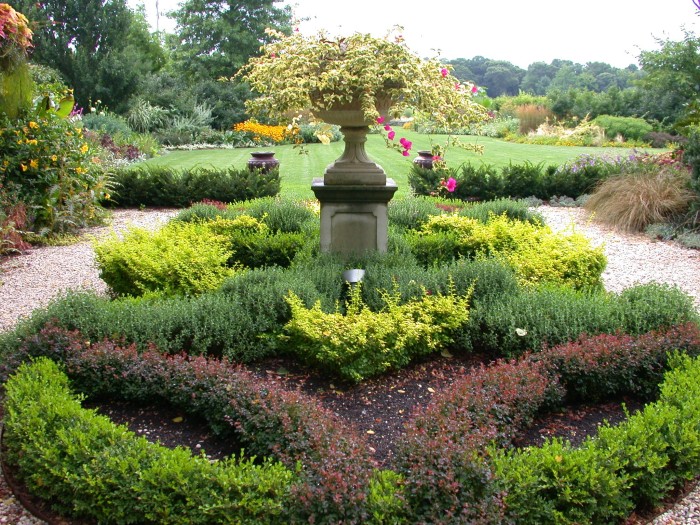
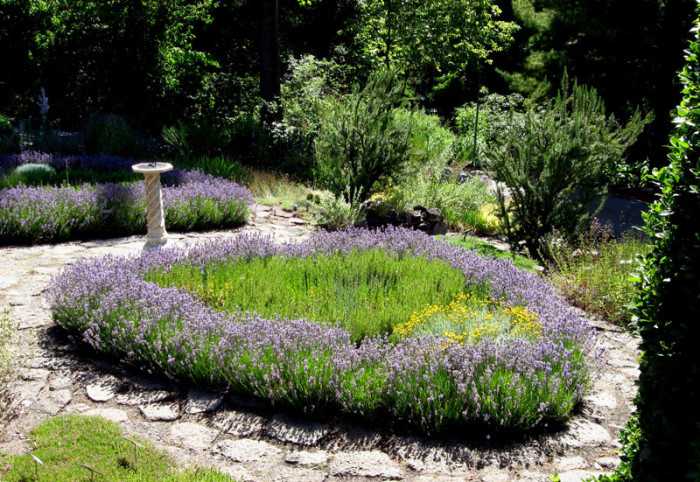
Advantages of modern knot garden design:
- low maintenance
- makes basic plants more exciting
- can reflect the design of your home
- gives an upscale look
Other Related Posts you might be interested in:
Images: by Tobi, Eckersley Gardens, Landscape Focus, Filoli Knot Garden with Lavender from Naturetime by Pam and Richard, cherry gal, dry stone gardens.
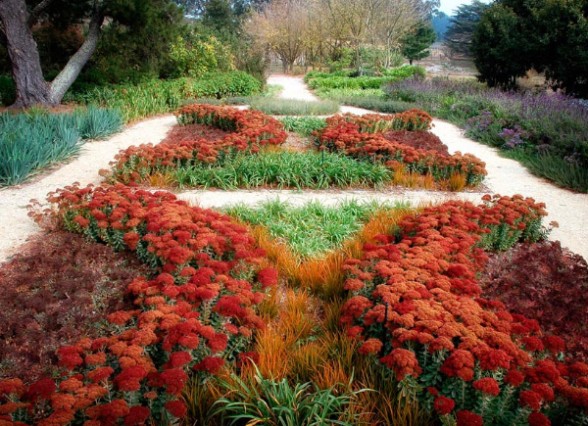
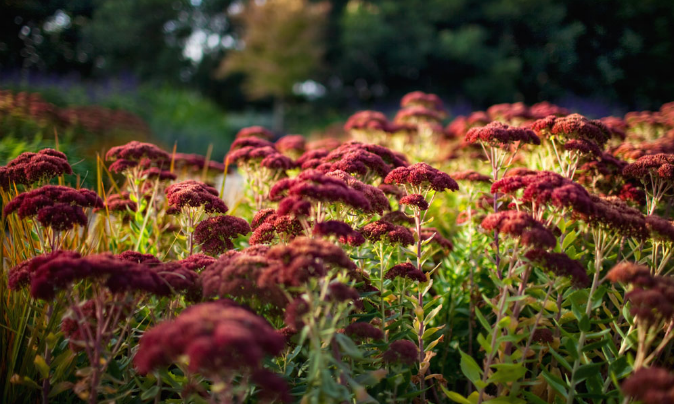

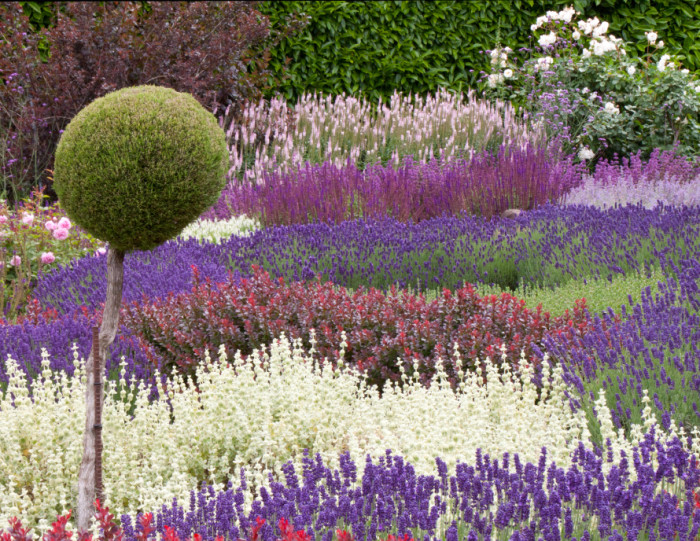
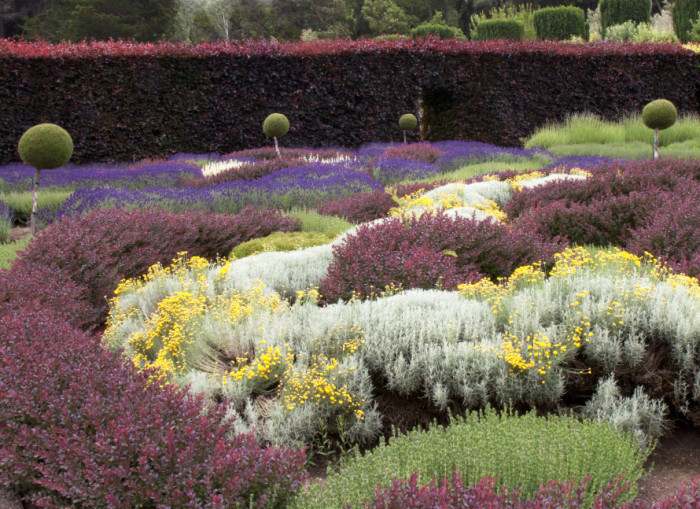
A lot to think about, the photos are interesting, and provide some real nuggets of inspiration.
completely gorgeous, how inspiring! i love the idea of a loose knot, loose patterns. i’ll keep this in mind x
What a great idea! We live in Denver and are xeriscaping our large front yard this spring. So I am trolling for ideas. I think the sedum one & the lavender one would be nice. Thank you for sharing this twist on a classic garden.